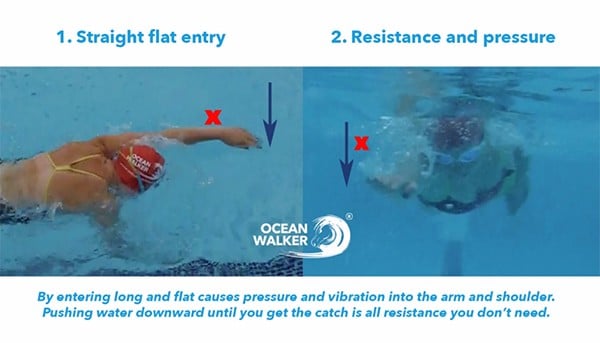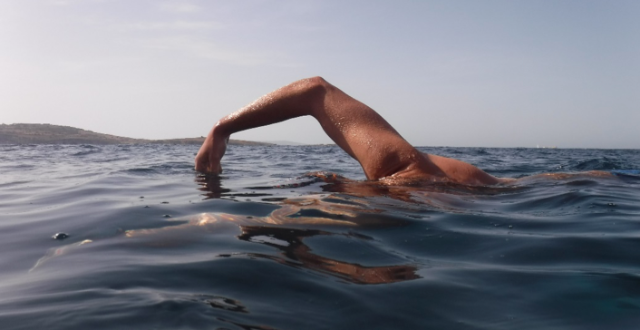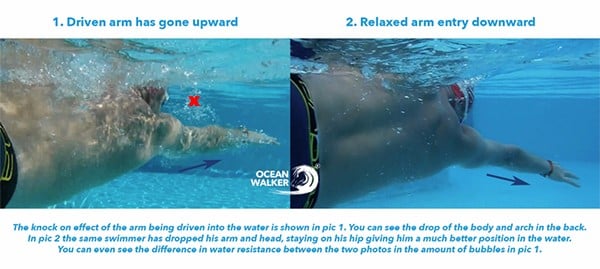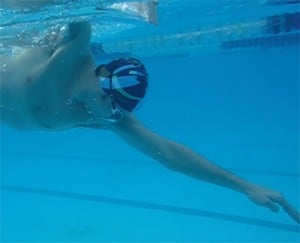As the third of a series of articles looking at the basics of front crawl technique, Ocean Walker coach and founder Adam Walker explains why driving your arms into the water actually makes you less efficient.
Need for speed
It seems a natural reaction in a swimmer to want to push and reach your arms forward and long when they enter the water. Like by punching your hand through will get you there faster? What your arm does upon and after entry impacts on your technique and efficiency.
For example, driving your hand into the centre line causes the head to be at an angle therefore losing balance which in turn results in over-rotation with the shoulder out of the water pivoting backwards, which can cause shoulder impingement.
Why I quit arm driving
I would enter with a straight arm, long and extended on top of the water. I’d hit the water from a high trajectory, it caused shock vibrations through my shoulder. The splash and resistance was significant as I entered with forearms extended in front. The position being like that of a belly flop.

I had the tendency to drop my elbow and drive the arm upwards towards the surface of the water. This upward motion would also make my head rise, which in turn would drop my hips creating more resistance and inefficiency. That uplifted hand would practically be putting on the brakes, giving the water something to push against. I would feel like I was swimming uphill!

The arm drop
So if I am not driving my arms into the water, then how do I get to the catch?
It’s all about the hip rotation and timing.
My relaxed semi-circle push of the elbow brings my hand and arm into almost a ‘diving’ position.

By waiting for the hips, there is little effort as they send the leading arm into the water during rotation with the hips creating forward momentum and glide. The catch takes place after the hips have done 180 degrees so the pull is never flat. This means that you are pulling less body mass through water making it more efficient, streamlined and takes pressure off the shoulder due to the rotation.

This also shuts down the chest and shoulder muscles. The arm is guided to a deeper 40 degree position with hand entering first, followed by forearm, elbow and shoulder. I finish in this position under water with the feeling of swimming downhill, with the hips up and straight into the catch with my hands pointing downwards and fingers relaxed and open.
The outcome

The arm entry in the Ocean Walker Technique is smoother and more efficient. I am gliding, taking my strokes down from 19 per length to 12 in a 25 metre pool, and over 100 metres I am 2-5 seconds faster on average. It was a major revelation and meant I could complete six of the toughest channel swims in the world and I was the fastest man across 2 way Windermere in 2011.
Freestyle Swimming Technique - Using Hip Rotation As a Power Source -->















